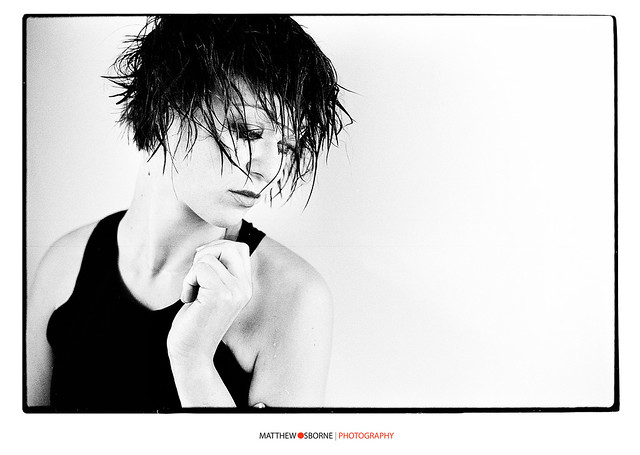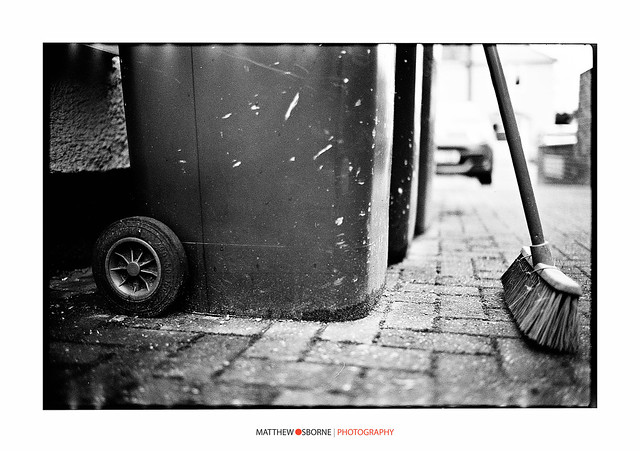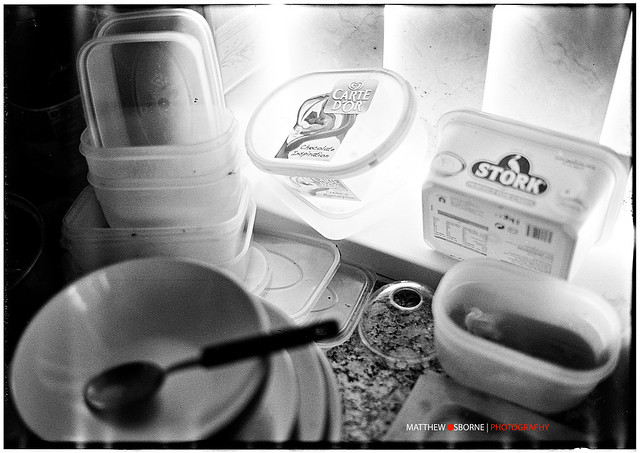10 Famous Photographers, and What You Can Learn from Them!
Photographers
today can learn much from the famous photographers that have paved the
way before us. Most of these photographers are now deceased, but a few
of them are still taking beautiful photos today. Obviously, this is not
an exclusive list. The list is composed of a few famous photographers
that were nominated by the
Improve Photography community on
their Facebook fan page.
Henri Cartier-BressonThis
list of famous photographers would be absolutely meaningless without
Cartier-Bresson. In many ways, Cartier-Bresson’s style is precisely the
opposite of Jerry Uelsmann. Where Uelsmann elished in creating
composites, Cartier-Bresson did not even like developing his own photos.
His photojournalistic style has done more to influence photography than
any other photographer’s contribution. He was one of the first
photographers to switch over to the 35mm format and used exclusively
Leica cameras with 50mm lenses. Like Ansel Adams, he shot almost
exclusively in black and white. You can
see Henri Cartier-Bresson’s work here.
 |
| Henri Cartier Bresson - Hyeres, France, 1932. |
What you can learn from Henri Cartier-Bresson:
The great tragedy of Cartier-Bresson’s photography is that he gave up
the craft entirely long before he died. In 1975, twenty-nine years
before he died, he became bored with photography and turned his
attention to painting. He locked his camera in a safe in his home and
rarely even took it out. Bottom line–DO NOT let this happen to you! If
your goal in photography is to do anything other than enjoy it, then you
will likely burn out after time.
Annie LeibovitzAnnie
Leibovitz is a contemporary (born in 1949) portrait photographer who is
well known for her work over the years with Rolling Stone Magazine and
Vanity Fair. Perhaps her best known photograph is a portrait of John
Lennon with Yoko Ono, which was taken the same day that John Lennon was
murdered.
Recently, Leibovitz has found herself struggling
through financial disaster caused by poor financial planning. As
collateral for a contract, she has provided her entire portfolio of
images. What a shame!
As is evident in viewing Ms. Leibovitz s
photography, she prides herself in taking intimate portraits which
communicate about the subject. She is quoted as saying, “A thing that
you see in my pictures is that I was not afraid to fall in love with
these people.” You can
see some of Annie Leibovitz’s photography here.
 |
| Leibovitz's portrait of John Lennon and Yoko Ono in 1980. |
What you can learn from Annie Leibovitz:
Your portraits will always look lifeless until you begin to take
portraits that communicate the life of the model. Get to know your model
and say something about her in your photography.
Ansel AdamsI
think it would be safe to say that Ansel Adams is the most famous
photographer of all time. Even non-photo nerds know Ansel Adams and have
seen his stunning landscapes. Adams is well-known as a master of the
darkroom. His black and white landscapes of Yosemite and Grand Teton are
outstanding for the captivating contrast that he achieved with
extensive dodging and burning in the darkroom. Even later in his life,
he continued to use large format cameras.
 |
| Ansel Adams - The Tetons and the Snake River, 1942. |
What you can learn from Ansel Adams:
While on vacation this summer, my wife and I read a book containing his
letters and journal entries. What helped me improve my photography from
reading those letters is that Adams felt trapped later in his life
because he no longer had the physical strength and stamina to do the
photography that he wanted to do. Keep yourself in shape so you can
enjoy photography for a lifetime.
Brian DuffyBrian Duffy is an English photographer best known for his work shooting fashion in the 1960′s and 1970′s.
Later
in life, Duffy lost his interest in photography and even burned more
than half of his entire portfolio of negatives in a fire. Fortunately,
some of the photos were saved from the flames and remain on exhibit
today. One year before Duffy died, he began taking photos again.
 |
| Brian Duffy - Pret a Porter Sept 1977. |
What you can learn from Brian Duffy:
People are prone to rash decisions when they feel stuck in a rut. Duffy
lost a tremendous part of his life by burning his photos, but he came
back later and regained his interest for the art. If you find yourself
bored with photography, leave all the gear at home and simply go on a
few photowalks in places where you have never been. Fall in love with
photography again.
Dorothea LangeDorothea Lange was an American photojournalist who is best known for her photos of the Great Depression. Her photo
Migrant Mother
is one of the most well-known pictures in history. Aside from her
well-known work documenting the Great Depression, she also worked
tirelessly to photograph the internment camps in the 1940′s.
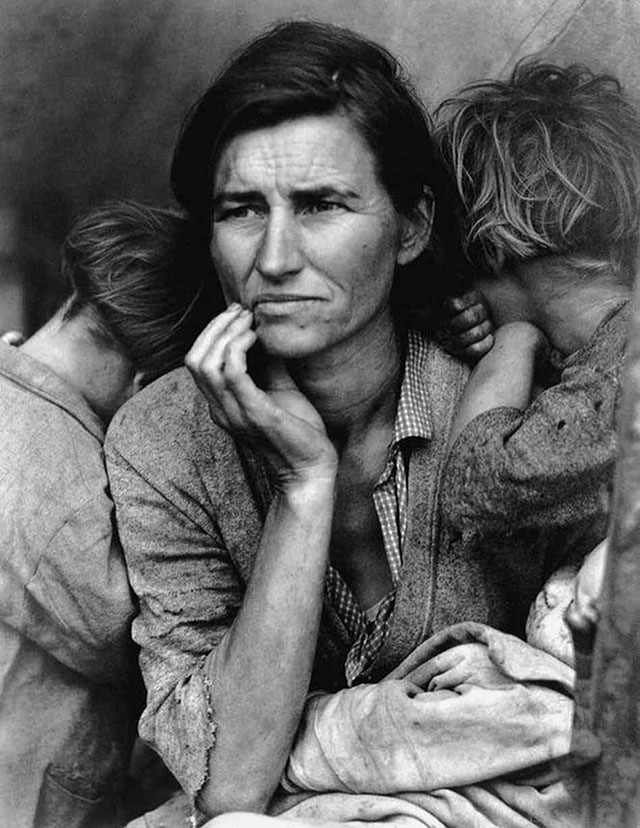 |
| Dorothea Lange - Migrant Mother. Nipomo, California, 1936. |
What you can learn from Dorothea Lange:
Most photographers spend their time taking one random picture here, and
another random picture there. Great photographers like Dorothea Lange
dedicate their time and talent to fully capturing one theme or person
before moving on to the next photography project. Dorothea Lange said,
“Pick a theme and work it to exhaustion… the subject must be something
you truly love or truly hate.”
Yousuf KarshI’m
going to be honest here. I have carefully selected some of the best, in
my opinion, photographers in history; however, I simply don’t
understand some of their photos and why some of them became famous. With
Yousuf Karsh, every single photo is a masterpiece. You can’t look at
any one of his photos and wonder why the photographer got famous. His
portraits truly speak volumes about the person. He is the Ansel Adams of
portraiture.
Karsh is quoted as saying, “Within every man and
woman a secret is hidden, and as a photographer it is my task to reveal
it if I can. The revelation, if it comes at all, will come in a small
fraction of a second with an unconscious gesture, a gleam of the eye, a
brief lifting of the mask that all humans wear to conceal their
innermost selves from the world. In that fleeting interval of
opportunity the photographer must act or lose his prize.” Many
photographers claim to capture such moments, but Karsh truly had a gift
for taking portraits that communicate. You see one of his portraits and
you feel like you truly understand the model.
Another interesting
fact about Yousuf Karsh is that he always lit the hands of the subject
separately from the lighting on the rest of the person. He felt that the
hands were a vital part of the story of any portrait. You can
see photos from Yousuf Karsh here.
 |
| Yousuf Karsh portrait of Winston Churchill on cover of Life magazine, 1941. |
What you can learn from Yousuf Karsh:
Never take a portrait that doesn’t speak something about the person.
Pay attention to the hands as an important part of the story. Be super
famous and rich enough to own a 76-room house in Manhattan. Accomplish
any of those things (especially the last one, which is true about him)
and you’ll be better off for reading about his life.
BrassaiBrassai,
whose real name is Gyula Halasz (no wonder he picked a nickname), was a
photographer best known for his work on the streets of Paris. He did
not photograph celebrities or have fame or fortune like many of the
other famous photographers listed here. However, his street photography
showing ordinary people has made him famous throughout time.
 |
| Brassai - The Eiffel Tower at Twilight, 1932. |
What you can learn from Brassai:
I often hear from photographers that they enjoy photography, but don’t
have the money to travel to find great locations. Brassai was born in
Hungary, but lived in Paris for most of his life. He did not travel
around the world to do photography or have celebrities come to him to
have their portraits taken. He did his work in one city and he took
captivating photos of ordinary people. Don’t use excuses for your
photography!
Robert CapaRobert
Capa is best known for his war-time photography. He worked tirelessly
to cover five different wars, including World War II. Capa was one of
the co-founders, along with Cartier-Bresson, of Magnum Photos.
Not
only was Capa a great photographer, he was also a fantastic business
man. His name is actually Endre Friedman. He and an associate decided to
form a partnership in which he would take the pictures and do the dark
room work, the associate would do the marketing and sales, and they
would credit “Robert Capa” as being the photographer. They found that
they could get a much higher price in selling the pictures to the
newspaper if they sold the photos under the made-up name “Robert Capa”
and inventing the story that he was a rich man. Fraudulent? Probably.
Did it work? Definitely. You can
see Capa’s photography here.
 |
| Robert Capa - Landing of the American troops on Omaha Beach, Normandy, June 6th, 1944. |
What you can learn from famous photographer Robert Capa:
Capa is frequently quoted as saying, ”If your picture isn’t good
enough, you’re not close enough.” This was significant because he was a
combat photographer! He was known for literally getting down in the
trenches with the soldiers to take photos, rather than taking photos
from a distance as was the common practice. So, get close to the action
and your photos will improve!
Jay MaiselMaisel
is one of the most famous modern photographers. He takes a simplistic
approach to photography that is largely unencumbered by complex lighting
set ups and fancy gear. In fact, he likes to shoot with one lens and
simply look for interesting light and shapes in the city.
Perhaps
the best way to learn from Jay Maisel is to subscribe to Kelby
Training. They have two video courses which feature Jay Maisel where he
walks around the city and shoots with Scott Kelby. It is truly fantastic
to watch a master do his work. You can
see Jay Maisel’s portfolio here.
 |
| Jay Maisel - Tree and Goal posts. |
What you can learn from Jay Maisel:
Ditch the gear and start paying attention to color, shape, and light.
As you go about your day, find little things that have an artistic flair
to them. Photography isn’t just about the knock-you-in-the-face obvious
shots.
Jerry UelsmannJerry Uelsmann as
established a photographic style using multiple photos to create a
surrealistic and impressionist composite image. Born in 1934, he used
film for many years and built his works using film cameras. His work
became famous mostly for his abilities in the dark room. Few others were
capable of creating composites using so many images with such skill.
Although Uelsmann is alive today, he never switched to digital cameras.
He said, “I am sympathetic to the current digital revolution and excited
by the visual options created by the computer. However, I feel my
creative process remains intrinsically linked to the alchemy of the
darkroom.” You can
see Jerry Uelsmann’s photography here.
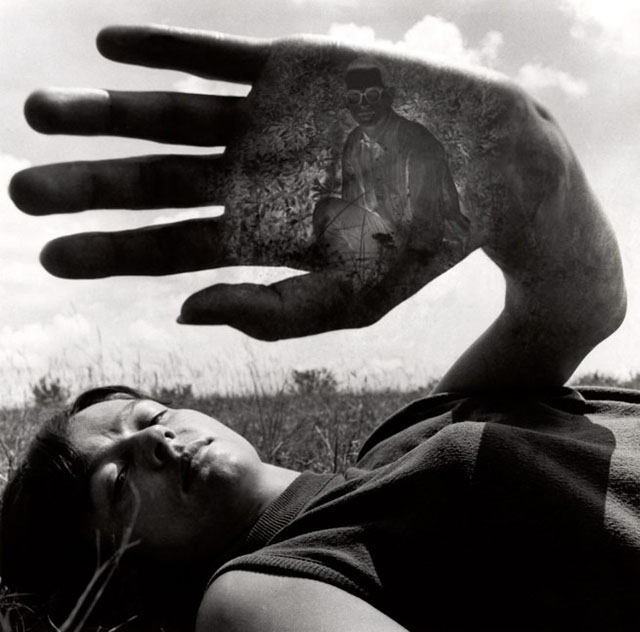 |
| Jerry Uelsmann - Untitled, 1966. |
What you can learn from Jerry Uelsman:
Don’t let “photography forum” talk convince you that there is anything
wrong with creating surrealistic images. Photography is art and you can
express yourself in whatever composited, blurred, cloned, dodged,
burned, and liquified way that you want.





































